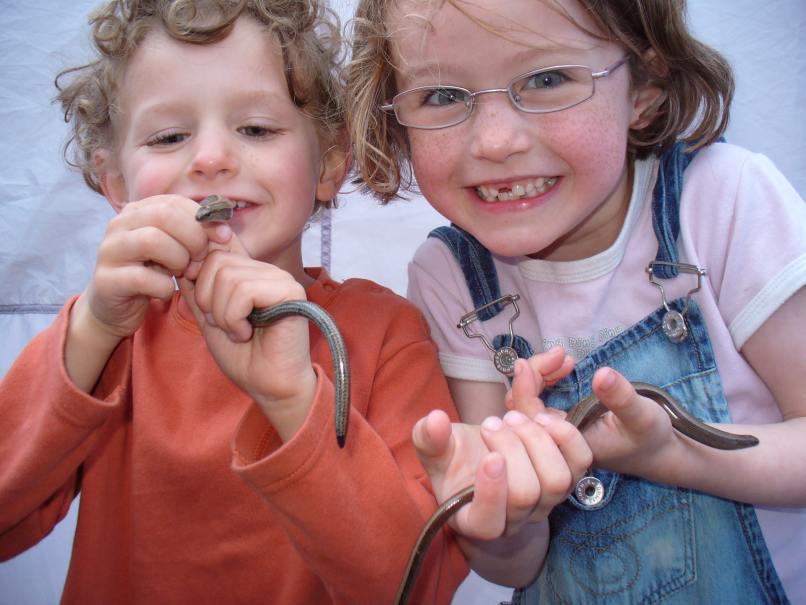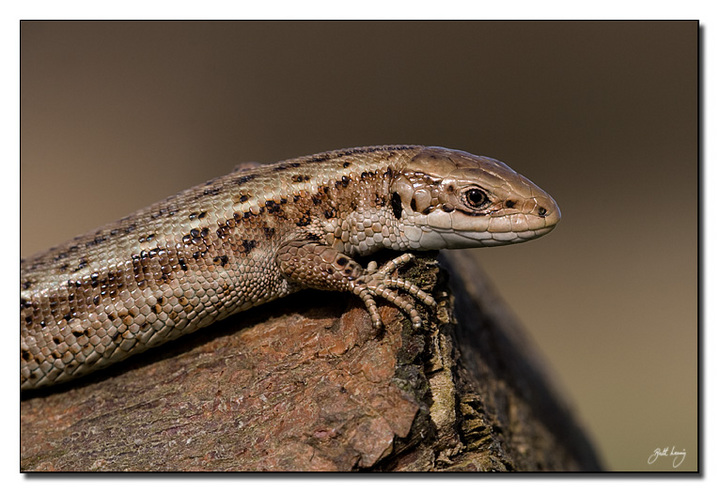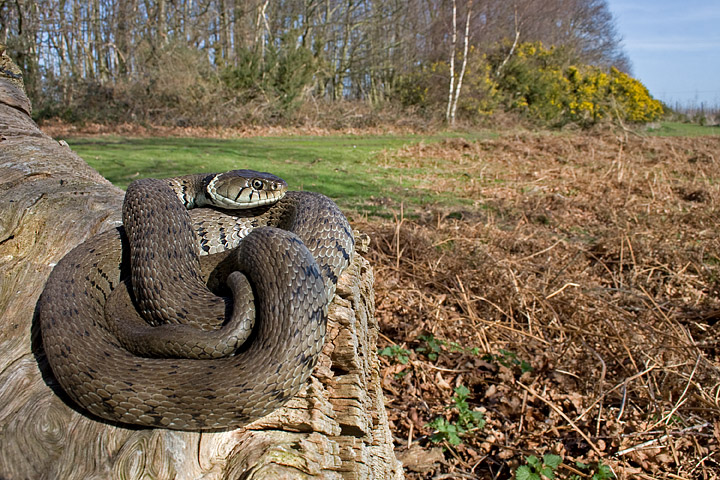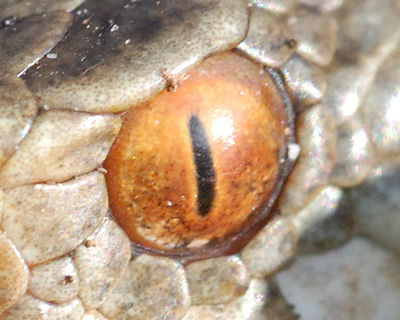 |
 |
macro photography for reptiles: |
| Author | Message |
|
tim hamlett Senior Member Joined: 17 Dec 2006 No. of posts: 572  View other posts by tim hamlett |
Posted: 29 Jul 2009 hi does anyone here ever use a poper macro lens for photographing reptiles, even if you rarely get close enough for 1:1? cheers tim |
|
arvensis Senior Member Joined: 15 Mar 2006 No. of posts: 445 View other posts by arvensis |
Posted: 30 Jul 2009 Hi Tim, I occasionally use a Sigma 150mm macro lens for herp work which is a cracking lens, good sharpness, contrast etc. The problem though is its weight - it is difficult to get a steady shot with anything slower than 1/250 sec when the the camera is handheld. It does have a lens collar so a mono/tripod could be attached. I think something in the 100mm range would be a better bet - though thats only in my opinion. I normally use a 24-70L and can hardly notice any difference in quality compared to the 150mm. Mark Hampshire Amphibian and Reptile Group. |
|
tim hamlett Senior Member Joined: 17 Dec 2006 No. of posts: 572  View other posts by tim hamlett |
Posted: 30 Jul 2009 cheers mark do you ever use lighting so you can use a faster shutter speed? tim |
|
arvensis Senior Member Joined: 15 Mar 2006 No. of posts: 445 View other posts by arvensis |
Posted: 30 Jul 2009 Hi Tim, If you mean lighting as in flash then the answer to that is very rarely - built in camera flashes are ok to a degree, it would get rid of some of the shadows, make quicker exposure times but at the expense of washing out the lighter colours. I don't know if you have used flash yourself but it seems to affect the pupil of Adders(instead of seeing a 'slit' it looks more rounded). One possible cure is a flashgun with a diffuser angled away from the animal - it may not cause that effect. I do not currently have a flashgun so i wouldn't know for sure though it is on the 'to get' list. Mark Hampshire Amphibian and Reptile Group. |
|
tim hamlett Senior Member Joined: 17 Dec 2006 No. of posts: 572  View other posts by tim hamlett |
Posted: 30 Jul 2009 cheers mark i'm interested that you find the sigma 150mm a bit heavy. i'm also interested that you find flash impacts on the integrity of your shots, although possibly only to the well-trained eye. your comments have been very helful. thanks tim |
|
arvensis Senior Member Joined: 15 Mar 2006 No. of posts: 445 View other posts by arvensis |
Posted: 30 Jul 2009 Hi Tim, I do have to admit that I'm not exactly the best (or skilled)of photographers - far from it! So opinions may vary - I really don't spend enough time to get the best from my equipment so it would be wise to get others' opinions. I think Al Hyde posted some cracking pics of La and Vb using either a 50mm or 60mm lens - it does show that the right equipment in the right hands can produce some stunning results. Mark Hampshire Amphibian and Reptile Group. |
|
dave fixx Senior Member Joined: 13 Mar 2007 No. of posts: 319  View other posts by dave fixx |
Posted: 31 Jul 2009 Hi Tim, I have used flash from a flashgun on one occassion and it did help with the picture lighting wise but I was very aware that I was drawing attention to myself so stopped and this is from a man who uses flash everyday for his job. I did angle the flash about 45 degree above the adder and it did the trick,I will try and find both examples with and without flash. Dave Dave Williams davewilliamsphotography.co.uk |
|
tim hamlett Senior Member Joined: 17 Dec 2006 No. of posts: 572  View other posts by tim hamlett |
Posted: 31 Jul 2009 cheers mark and dave next question is...would you say a decent 200mm lens is long enough or would you recommend a 300mm one. cheers tim |
|
-LAF Senior Member Joined: 03 Apr 2003 No. of posts: 317 View other posts by -LAF |
Posted: 04 Aug 2009 My preferred lens for reptiles is a 200mm with an extension tube. If I could afford a 150 or 280mm macro it would be my default lens of choice. At least one member here uses a 50mm Macro to shoot some decidedly 'non-forgiving' subjects (WW!). But that's down to experience. My next purchase will be the Canon 300 F4 IS as it does extremely close focus as standard and is the equivalent of the 200mm now that I've moved up to full frame. If you shoot on a 1.5/1.6 crop factor camera a 200mm is perfect for all but immature lizards. Lee. Lee Fairclough |
|
tim hamlett Senior Member Joined: 17 Dec 2006 No. of posts: 572  View other posts by tim hamlett |
Posted: 04 Aug 2009 thanks lee yes...cropped sensor so 200mm should be fine. cheers tim |
|
DrDom Member Joined: 13 Jul 2005 No. of posts: 14 View other posts by DrDom |
Posted: 06 Aug 2009 Hi Tim etc - to add my two penneth Macro lenses are very useful as they provide a seamless way of getting in close. I have used a 200mm 'normal' lens with an extension tube for snakes to moderate success but macro lenses are more flexible. Re shutter speeds - there is a 'rule of thumb' to avoid camera shake of using a shutter speed of 'one over' the focal length in mm. In these days of cropped cameras read effective focal length - so for a 150mm lens on full frame this would be the next speed over 1/150 which would be 1/250, for a crop frame it would be 1/225 [i.e. 150x1.5=225] which in this instance would also be 1/250. The sigma 150mm is very good (as are most prime macro lenses in fact) and is heavy but this can help mitigate camera shake as the setup has more mass/inertia! Technique also helps reduce shake, use a tripod, bean bag, coat, rucksack etc. If using a tripod/bean bag (and if you have enough time!) use the camera's mirror lock-up or live view, along with a cable release - which helps remove movement caused by 'mirror bounce'. Many people do use flash to fill-in light the subject and allow smaller apertures/greater depth of field. The 'look' this creates is subject to personal preference. Flash durations are so short that this will help with camera shake - although if there is enough natural light coming in at the same time you can still get blur. HTH Dominic Common lizard, 90mm macro on Canon crop DSLR, 1/160 sec handheld. F5
Dominic Tantram - Guildford Surrey Amphibian & Reptile Group (SARG) |
|
zarozinia Member Joined: 12 Aug 2009 No. of posts: 5 View other posts by zarozinia |
Posted: 12 Aug 2009 Hi Virtually all my reptile photographs are hand held, I simply lean on something such as my knee or rucksack if I need extra stability. If I'm out and about I tend to take a thick, large bin bag rolled up in my kit bag to throw on wet or prickly areas so I can get in close. I mainly use a Canon 60mm F2.8 lens for most of my macro photography, although the Sigma 70-300 comes in handy when I cant get close. I do carry a ring flash with me for those times when lighting is poor, but rarely need to use it out doors Some of my pics, all from my garden - aren't I lucky
|
|
tim hamlett Senior Member Joined: 17 Dec 2006 No. of posts: 572  View other posts by tim hamlett |
Posted: 12 Aug 2009 great pics folks and thanks for the advice/help. tim |
|
tim-f Senior Member Joined: 13 Apr 2008 No. of posts: 60  View other posts by tim-f |
Posted: 12 Aug 2009 Hi Tim. I use a Nikon D200 with a Micro-Nikkor 200mm f2.8, which is effectively 300mm in old 35mm film terms. It's a "proper macro lens" but only goes to 1:2 without extension tubes (which I have but have never used for herps). I've got some pretty good results, but in the proper hands my set up would give "pro quality". I also have a 105mm Micro-Nikkor but have never successfully used it for herps, as I find I need the extra length of the 200mm - someone with better field skills may find the 105mm okay. A big problem I find with the 200mm is lack of depth of field. Dominic's Common Lizard photo shows this extremely well. I have used a single flash to allow a small aperture with reasonable results. Cheers, Tim. |
|
B Lewis Krag Committee Joined: 24 Aug 2004 No. of posts: 146  View other posts by B Lewis |
Posted: 13 Aug 2009 Hi Folks, my primary lens for reptiles and herps in general is my Sigma 150mm f2.8 Macro.. A blinding lens and one I wouldn't do without.. I don't think I would change to Canon for a macro lens when the quality from this cheaper option is really very good. Many of my wildlife photography (Pro) friends use the Sigma options and they sware by them.. I also use my Canon 24-70mm f2.8 for some nice 'wide-angle' stuff which really does the animals justice and is what I am currently using for projects just now.. Anyway, lots to choose from, just think about a different style rather than a simple portrait shot like this one I took a few months ago.. Make your images stand out from the crowd and get them noticed.. 
Kind regards, Brett Taken using a Sigma 150mm, Hand-held , 1/160 sec @ f10, ISO 160 
.. and a wide angle using the 24-70mm (posted elsewhere on RAUK), sometimes more is better..  Lewis Ecology Brett Lewis Photography Kent Reptile & Amphibian Group DICE - University of Kent |
|
Gue Jam Fowsid Member Joined: 19 Apr 2008 No. of posts: 5  View other posts by Gue Jam Fowsid |
Posted: 19 Oct 2009 Nice pics Brett, I too have a Sigma macro. Its the 105mm. It has performed well although I feel that in some situations I now need a better flash to increase the depth of field, and increase the shutter speed to get sharper shots. Surrey Amphibian and Reptile Group |
- macro photography for reptiles |